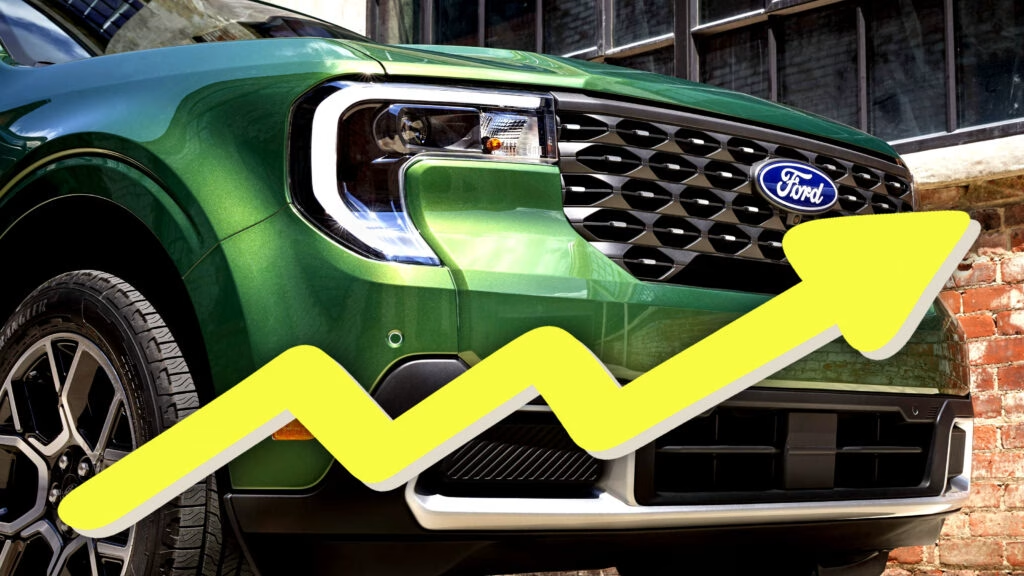The automotive market is buzzing with changes, and if you’re in the market for a new car, you might have noticed something: prices are on the rise. In April, the average transaction price (ATP) for new vehicles hit a staggering $48,699, marking a 2.5% increase from March. This jump is not just a seasonal blip; it’s double the usual increase we’d expect for this time of year. So, what’s driving these prices up, and what does it mean for you as a potential buyer?
Understanding the Price Surge
The recent spike in car prices coincided with President Trump’s announcement of new auto tariffs, which has thrown a wrench into the automotive market. The uncertainty surrounding these tariffs has led consumers to rush to dealerships, eager to secure their purchases before prices potentially climb even higher. This surge in demand, coupled with a decrease in sales incentives—now at their lowest in over a year—has pushed transaction prices upward.
But it’s not just the tariffs at play. According to Kelley Blue Book, the ATP figures are a more accurate reflection of what buyers are actually paying compared to the Manufacturer’s Suggested Retail Price (MSRP). Historically, the only time we’ve seen a larger April increase was back in 2020, during the pandemic and the chip shortage crisis, which caused significant disruptions in car production.
Diving Deeper into the Numbers
When we break down the ATP by vehicle segments, the trends become even more interesting. For instance, while the overall ATP rose significantly, electric vehicles (EVs) saw only a modest increase of 0.2%. This stagnation in EV sales—down nearly 6% in April—suggests that buyers may be hesitant to invest in battery-powered vehicles amidst rising costs and market uncertainty.
On the flip side, subcompact cars experienced a remarkable ATP increase of 10.7% in April, reflecting a growing demand in this category. It seems that as consumers look for more budget-friendly options, subcompact vehicles are becoming increasingly attractive.
Segmented Insights: What’s Hot and What’s Not
Let’s take a closer look at some specific segments:
– **Compact Cars**: Averaging $27,303, these vehicles saw a slight month-over-month increase of 0.6%, indicating steady demand.
– **Full-Size Pickup Trucks**: Averaging $64,219, these trucks have remained relatively stable, with only a minor increase of 0.8% from March.
– **Luxury Vehicles**: Brands like Cadillac and Genesis are seeing higher ATPs, with Cadillac’s average reaching $76,830, a 3.7% increase from the previous month.
Interestingly, brands like Ford and Chevrolet are also adjusting their pricing strategies. For example, Ford’s Mexico-built Maverick has seen price hikes, reflecting the broader trend of manufacturers responding to market pressures.
Brand-Specific Trends
When we look at ATP by brand, the differences are telling. Acura, for instance, has an ATP of $52,056, while luxury brands like Mercedes-Benz and Porsche command averages of $78,312 and $114,093, respectively. These figures highlight how brand perception and market positioning can significantly influence pricing.
For buyers, this means that understanding the market dynamics and brand positioning is crucial. If you’re eyeing a luxury vehicle, be prepared for higher prices, but also consider the potential for resale value down the line.
Navigating the Current Market
So, what should you do if you’re in the market for a new car? Here are a few tips:
1. **Do Your Research**: Understand the average transaction prices for the vehicles you’re interested in. Knowledge is power when negotiating.
2. **Consider Timing**: If you can wait, keep an eye on market trends. Prices may stabilize or even drop as the market adjusts to the new tariffs.
3. **Explore Different Segments**: If you’re flexible, consider looking at subcompact or compact cars, which are currently seeing better pricing dynamics.
The big takeaway? The current automotive market isn’t just about finding the best deal; it’s about understanding the broader economic factors at play. Start with one change this week—whether it’s researching a new segment or visiting a dealership—and you’ll likely spot the difference in your buying power by month’s end.

